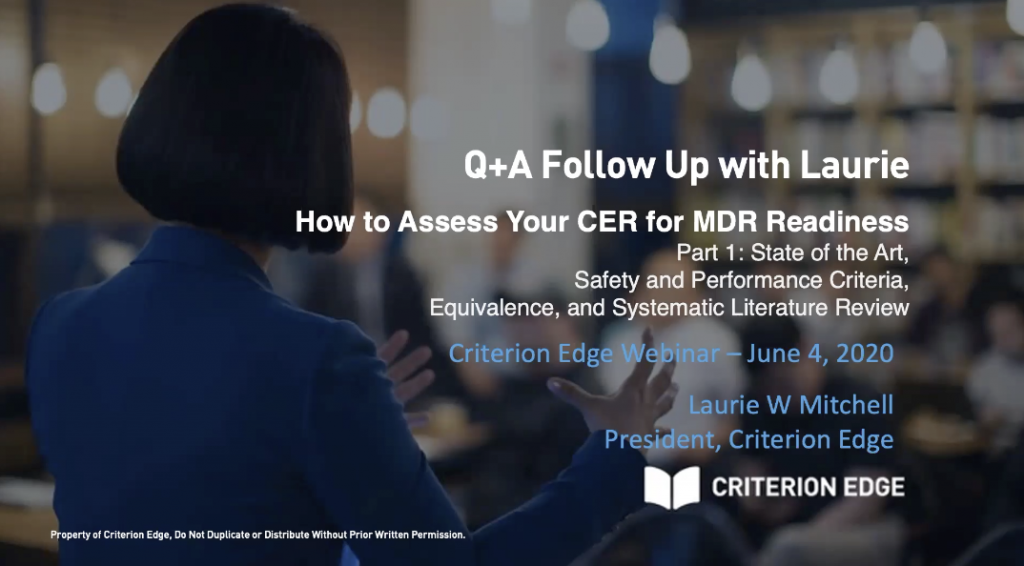Author: Suzanne Broussard
Is your organization ready to display to the world your medical devices safety and performance record? The Summary of Safety and Clinical Performance (SSCP) is one of the new requirements imposed by manufacturers by the European Commission in Medical Device Regulations (MDR)2017/745 for implantable devices and class III devices. And, SSPC will go virtual when EUDAMED roles out in 2022.
The SSCP is intended to provide intended users (healthcare professionals, and if relevant patients) with an updated summary of the device’s safety, clinical data, and clinical performance. This enhanced transparency provides everyone with adequate access to the devices clinical data, including your customers and your competitors.
The SSCP should be sourced directly from the technical documentation, including the clinical evaluation report (CER), post-market surveillance, and post-market clinical follow-up (PMCF). And, the SSCP “shall be validated by a notified body (NB) and made available to the public via the European database on medical devices (EUDAMED).” The SSCP must be updated at least annually.
There are added benefits to making the SSCP public knowledge that can benefit manufacturers. Organizations can utilize the public information to their advantage. For example, manufacturers can use competitors SSCPs to:
- Justify their devices proposed pre-market and post-market studies
- Understand other devices strengths and weaknesses to improve your device
- Justify risk
- Increase market awareness
Deadlines Extended to Allow Citizens Time to Safely Respond to the COVID-19 pandemic.
The European Commission has proposed to extend the deadline for MDR compliance by one year (at this time waiting for approval by member states and publication in the Official Journal). The launch of EUDAMED has also been delayed. Now, EUDAMED will be launched together with the in-vitro medical devices in May 2022.
The SSCP is still required to be part of MDR 2017/745 even though the launch of EUMADED has been moved back.
A silver lining to the current health crises is that medical device manufacturers now have more time to become fully compliant with the European Commission regulations.
(more…) 






